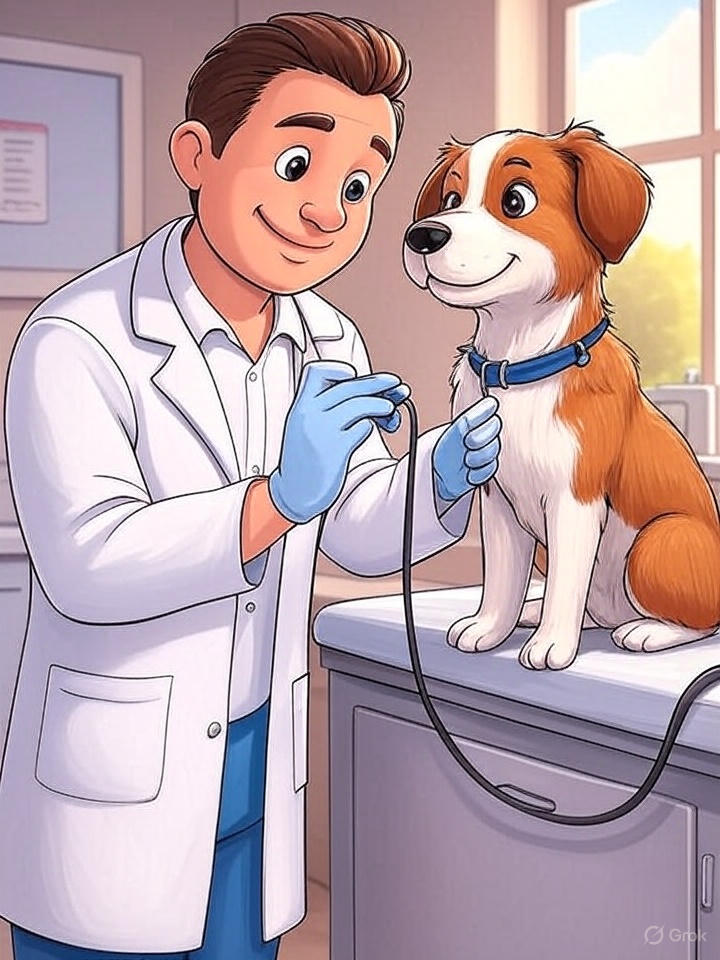2. Types of Pet Examinations
Veterinary examinations can cover many different aspects of health depending on your pet’s age, breed, and medical history. Some of the most common include:
General Physical Exam: A head-to-tail check that includes examining the eyes for clarity, the ears for infections, the teeth and gums for dental disease, and the skin and coat for allergies, parasites, or infections. The vet will also check the muscles and joints for signs of pain or stiffness.
Internal Health Check: Using a stethoscope, the vet listens to the heart and lungs, checks for murmurs or abnormal breathing patterns, and palpates the abdomen to feel the liver, kidneys, stomach, and intestines. Blood tests may also be recommended to check liver enzymes, kidney function, and red and white blood cell counts.
Parasite and Vaccination Review: Parasites such as fleas, ticks, heartworms, and intestinal worms can cause serious illness. The vet will check for signs of infestation and update preventive treatments. Vaccination schedules are reviewed to protect against diseases like rabies, distemper, and parvovirus.
Specialized Exams: Pets with unique needs, such as senior animals or certain breeds prone to genetic conditions, may undergo more detailed tests. This may include X-rays for joint problems, ultrasound for organ health, or dental X-rays to check below the gumline.
